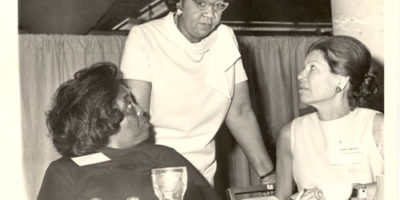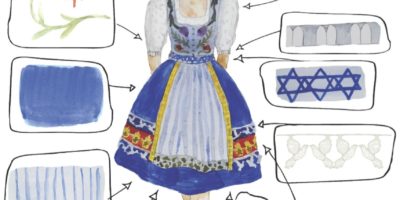What Not to Wear
Although he is a cultural anthropologist by training, Eric Silverman’s insightful and eminently readable volume, A Cultural History of Jewish Dress (Bloomsbury), adheres to no single discipline. Instead, he sees Jewish clothing “…as expressive of an open-ended conversation about what it means to be Jewish,” and he aims to parse the meanings, both positive and negative, of what Jews have chosen — or at times been forced — to wear.
Silverman begins his inquiry in Biblical times, and claims that the articles and details of ancient clothing — including shoes, veils, fringes, amulets — were metaphoric of certain “key values and conflicts in the Israelite world view.” From there, he moves on to dress regulations in classic rabbinic texts and shows how these regulations created a defensive barrier against the Gentile world, protecting Jews from the “profanities and pollutions of the non-Jewish societies in which they dwelled.”
Next is the “long and shameful history of restrictive dress codes imposed by the church and European royalty,” culminating in the hateful yellow star of the Nazi period. But Silverman also shows how this tradition, though honed in Europe, did not originate there; he finds evidence of Jewish “besmirching” in the hats, badges and other garments required of Jews living in Islamic cultures.
Silverman then segues
into the modern era, demonstrating how the often bitter struggle between assimilation and tradition played out through dress, a process that he claims was,
“perhaps the most consequential transition for Jewish identity…over the past millennium.”
The chapter on the rabbinic concept of tzniut, modesty, addresses familiar issues such as necklines, hemlines, color, sleeves and wigs, but it also brings new elements to the table, like a conference of ultra-Orthodox rabbis in Jerusalem who met to tackle a terrifying new fashion crisis — Spandex — and the ways in which contemporary dolls are used to reflect, reinforce, and normalize the sartorial rules of modesty.
This impressive survey is satisfying and meaty, and the many photographs, including several of the author’s own family, add an appealing visual counterpoint to his fluid commentary. In analyzing a formal portrait of an immigrant family (which includes his grandmother), he points to the middle class trappings of the sitters: faux parlor setting, good posture, clean clothes, fashionable hairstyles. Nothing in the photo speaks specifically to a Jewish identity — no prayer shawls or head coverings. Yet the modesty of the high, buttoned up necklines, long sleeves and muted embellishments are consistent with Jewish norms and values. These people, “sad, proud, guarded,” dress between “two worlds, Old and New, Jewish and secular. They dress for passages, real and metaphoric.”
As the book unfolds, Silverman turns his careful eye toward the most traditional of accoutrements, like teffilin, tallit and yarmulkes but he also takes a look at the dress codes of the “New Jews,” with their ironic T-shirts, boxer shorts and thongs. These self-styled hipster Jews riff on tradition in ways that can be surprising and transgressive, like the T-shirt printed with the words Get Laid next to a pair of teffilin. As Silverman points out, this design, “presumes knowledge of the very Orthodoxy it offends, for only someone familiar with traditional Judaism would know…that one ‘lays’ teffilin.” It is precisely this kind of nuanced observation that makes this book such a deep and thought-provoking pleasure to read.
Yona Zeldis McDonough is Lilith’s fiction editor. Her most recent novel is Two of a Kind.




